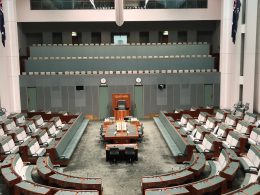The European Union’s recent economic forecast suggests a more rapid decline in Eurozone inflation than previously anticipated. This prediction comes as a welcome development amid ongoing concerns about the economic impacts of persistent inflation. Understanding the dynamics behind this forecast, its implications, and the broader economic context is crucial for policymakers, businesses, and investors. This article delves into the factors contributing to this revised outlook, compares the new forecasts with previous ones, and analyzes the potential economic and social impacts.
Revised Inflation Forecast

Previous Expectations vs. Current Projections
The European Commission’s earlier projections estimated that inflation in the Eurozone would remain relatively high throughout 2024, driven by various supply chain disruptions, energy price volatility, and lingering effects of the COVID-19 pandemic. However, the latest report indicates a significant downward adjustment. The new forecast suggests that inflation will decrease more rapidly, with rates potentially stabilizing around the European Central Bank’s (ECB) target of 2% by mid-2024.
Contributing Factors to the Revision
Several factors have contributed to this more optimistic outlook:
- Energy Prices: A stabilization and subsequent decline in global energy prices, particularly natural gas and oil, have eased one of the primary drivers of inflation.
- Supply Chain Improvements: Improvements in global supply chains, including reduced shipping costs and increased production capacity, have alleviated some of the bottlenecks that previously fueled price increases.
- Monetary Policy: The ECB’s tightening monetary policy, including interest rate hikes, has begun to take effect, curbing excessive spending and borrowing.
- Government Policies: Various fiscal policies aimed at supporting economic recovery while controlling inflation have started to show results.
Comparative Analysis: Previous vs. Current Forecasts
Table: Comparative Analysis of Inflation Forecasts
| Factor | Previous Forecast (Q1 2024) | Revised Forecast (Q2 2024) |
|---|---|---|
| Overall Inflation Rate | 3.5% | 2.5% |
| Energy Prices | High and volatile | Stabilized and declining |
| Supply Chain Disruptions | Moderate to high | Low to moderate |
| Monetary Policy Impact | Limited | Significant |
| Fiscal Policy Impact | Gradual | Accelerated |
| Economic Growth | 1.5% | 1.8% |
| Unemployment Rate | 7.5% | 7.0% |
Analysis
The table above highlights the key differences between the previous and revised inflation forecasts. The most notable change is the overall inflation rate, now expected to fall to 2.5% by the second quarter of 2024, compared to the earlier forecast of 3.5%. This revision reflects the cumulative impact of several positive developments in the economic environment.
Impact of Declining Inflation
Economic Implications
- Consumer Spending: Lower inflation typically boosts consumer confidence and spending, as individuals feel more secure about their purchasing power. This can stimulate economic growth and contribute to a virtuous cycle of increased demand and production.
- Investment: Stable and predictable inflation rates make the economic environment more conducive to long-term investments. Businesses are more likely to invest in new projects and expansion when they can anticipate stable costs.
- Interest Rates: With inflation under control, the ECB might have more leeway to adjust interest rates to support economic growth without risking runaway inflation. This could lead to more favorable borrowing conditions for businesses and consumers alike.
Social Implications
- Living Standards: Rapidly rising prices erode purchasing power, particularly affecting low- and middle-income households. A decline in inflation can alleviate some of this pressure, improving living standards.
- Wage Dynamics: Lower inflation can lead to more stable wage growth, as employers and employees have more predictable cost and income expectations. This stability is beneficial for long-term financial planning and workforce satisfaction.
- Social Stability: Persistent high inflation often leads to social unrest and dissatisfaction. A more stable economic environment with controlled inflation can contribute to greater social stability and public trust in economic management.
Challenges and Risks
Potential Headwinds
Despite the optimistic forecast, several potential challenges could derail the anticipated decline in inflation:
- Geopolitical Tensions: Ongoing geopolitical issues, particularly related to energy supply from regions like Eastern Europe, could reignite volatility in energy prices.
- Climate Change: Extreme weather events and other climate-related disruptions could impact agricultural production and other key economic sectors, driving up prices.
- Supply Chain Vulnerabilities: While improvements have been noted, global supply chains remain vulnerable to disruptions, such as those caused by geopolitical conflicts or pandemics.
Policy Considerations
Policymakers must remain vigilant and adaptive to changing circumstances. The following areas require careful attention:
- Monetary Policy: The ECB must balance between supporting economic growth and controlling inflation, adjusting interest rates and other tools as needed.
- Fiscal Policy: Governments should continue to implement policies that support economic recovery while ensuring that spending does not exacerbate inflationary pressures.
- Structural Reforms: Long-term measures to enhance economic resilience, such as investments in green energy and digital infrastructure, are essential for sustaining growth and stability.
Conclusion
The revised forecast for Eurozone inflation presents a more positive outlook for the region’s economic future. Lower-than-expected inflation rates can boost consumer and business confidence, spur investment, and improve living standards. However, this optimistic scenario is not without risks. Policymakers must remain proactive and responsive to ensure that the current positive trends are sustained and that potential challenges are effectively managed.
Analysis Table: Factors Contributing to Revised Inflation Forecast
| Factor | Description | Impact on Inflation |
|---|---|---|
| Energy Prices | Stabilization and decline in global energy prices, particularly natural gas and oil. | Significant decrease |
| Supply Chain | Improvements in global supply chains, reduced shipping costs, and increased production capacity. | Moderate decrease |
| Monetary Policy | Effective implementation of interest rate hikes and other monetary policies by the ECB. | Significant decrease |
| Fiscal Policies | Government measures supporting economic recovery while controlling inflation. | Moderate decrease |
| Economic Growth | Sustained economic growth providing a stable environment for price stability. | Moderate impact |
| Geopolitical Risks | Potential geopolitical tensions, particularly related to energy supply disruptions. | Potential increase |
| Climate Change | Climate-related disruptions affecting agricultural production and other sectors. | Potential increase |
| Supply Chain Risks | Ongoing vulnerabilities in global supply chains due to geopolitical conflicts or pandemics. | Potential increase |
This analysis highlights the multifaceted nature of the factors influencing the revised inflation forecast and underscores the importance of continued vigilance and strategic policy-making in ensuring economic stability and growth.











